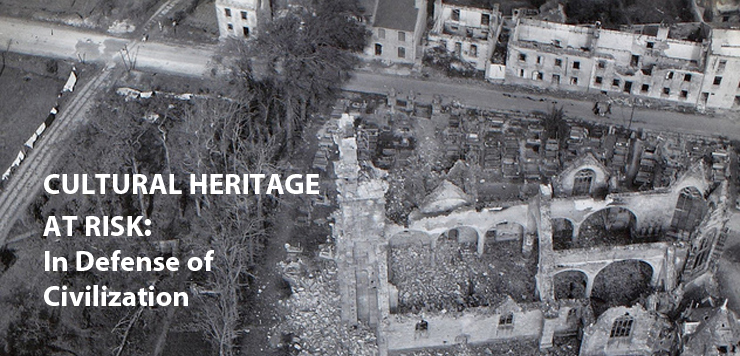Start Date
27-10-2017 1:30 PM
End Date
27-10-2017 2:00 PM
Abstract
Why would organizations attack or kill people at cultural heritage sites or destroy such sites? Using data from the Big Allied and Dangerous insurgent dataset that has data on 140 insurgent organizations from 1998-2012, and data from the Global Terrorism Database, this presentation examines the factors that make insurgent groups more likely to attack such sites or kill people at such sites. We look at the impact of organizational ideology, organizational structure and power as well as country level factors.
Included in
Archaeological Anthropology Commons, Architectural History and Criticism Commons, Art and Materials Conservation Commons, Arts Management Commons, Cultural Resource Management and Policy Analysis Commons, Fine Arts Commons, Forensic Science and Technology Commons, Geographic Information Sciences Commons, Historic Preservation and Conservation Commons, International Relations Commons, Other History of Art, Architecture, and Archaeology Commons
KEYNOTE ADDRESS - When Violent Nonstate Actors Target Cultural Heritage Sites
Why would organizations attack or kill people at cultural heritage sites or destroy such sites? Using data from the Big Allied and Dangerous insurgent dataset that has data on 140 insurgent organizations from 1998-2012, and data from the Global Terrorism Database, this presentation examines the factors that make insurgent groups more likely to attack such sites or kill people at such sites. We look at the impact of organizational ideology, organizational structure and power as well as country level factors.

Speaker Information
Dr. Victor Asal (Phd University of Maryland, 2003) is Chair of the Department of Public Administration and Policy and an Associate Professor of Political Science at the University at Albany. He is also, along with R. Karl Rethemeyer, the co-director of the Project on Violent Conflict. Dr. Asal is affiliated with the National Consortium for the Study of Terrorism and Responses to Terrorism (START), a Department of Homeland Security Center of Excellence. Dr. Asal’s research focuses on the choice of violence by non-state organizational actors as well as the causes of political discrimination by states against different types of groups including, ethnic minorities, sexual minorities and women. Asal has been involved in research projects funded by the Defense Advanced Research Projects Agency, Defense Threat Reduction Agency, The Department of Homeland Security, The National Science Foundation, and The Office of Naval Research.